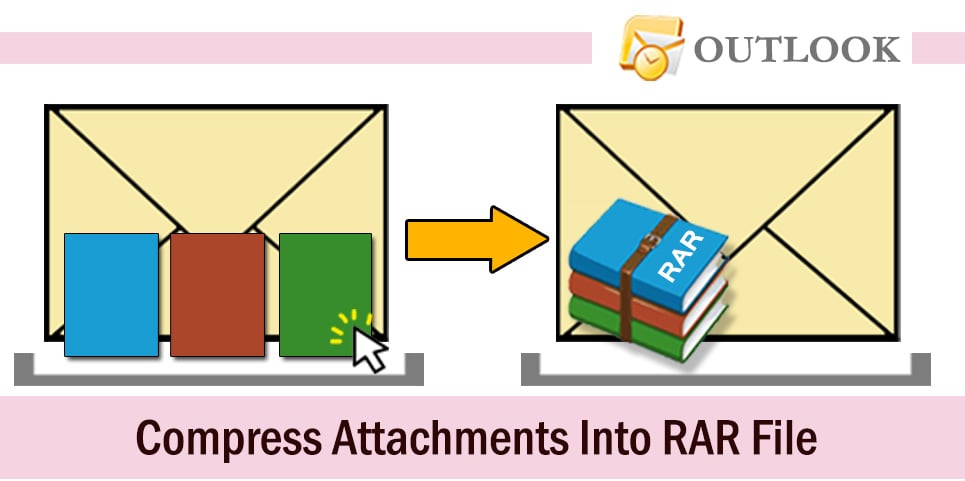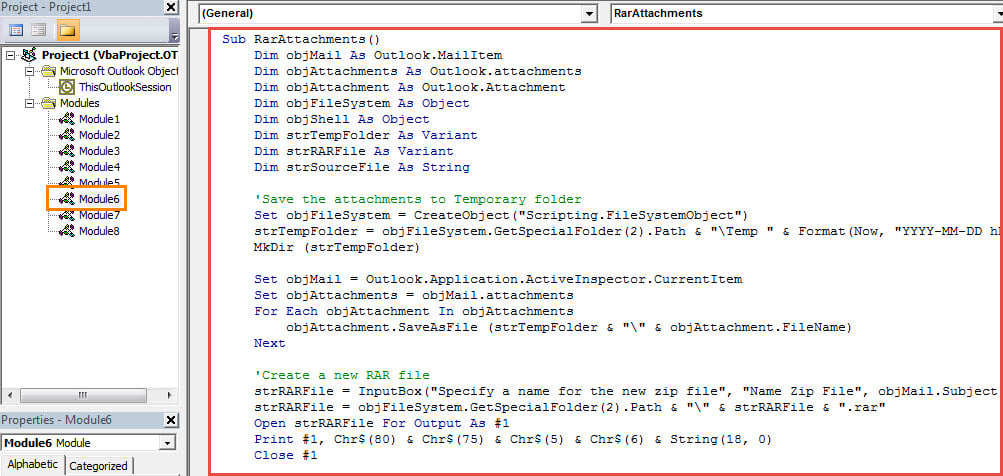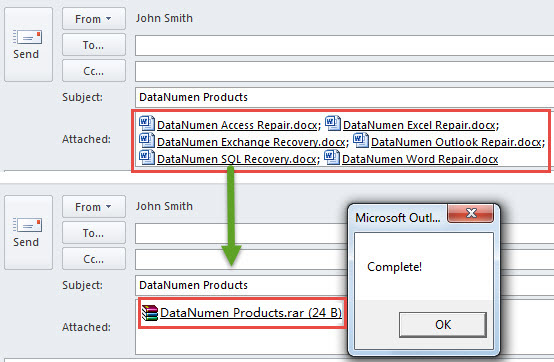Though Outlook doesn’t permit directly compressing attachments into a RAR file, you still can use the VBA code introduced in this article to realize it like a breeze.
As we all know, when attaching many large files to one email, you will be likely to get a warning about the attachment size limit in Outlook. Also, if an email carries too large attachments, it will become more difficult to send it out successfully. So, in face of such attachments, you can opt to compress them into a RAR file, which can reduce the size of the attached files in some degree.

In general, to compress files into a RAR file, you can only achieve it in local drive in that Outlook doesn’t provide such a native feature for compressing. However, many hope to accomplish it directly within Outlook. Therefore, here we will teach you how to get it with Outlook VBA.
Quickly Compress All Attachments into a RAR File in Your Outlook Email
- At the very outset, launch your Outlook application.
- Then press “Alt + F11” keys in the main Outlook window.
- Next you’ll enter “Microsoft Visual Basic for Applications” window. You need to open an empty module.
- Subsequently, copy and paste the following VBA code into this module.
Sub RarAttachments()
Dim objMail As Outlook.MailItem
Dim objAttachments As Outlook.attachments
Dim objAttachment As Outlook.Attachment
Dim objFileSystem As Object
Dim objShell As Object
Dim strTempFolder As Variant
Dim strRARFile As Variant
Dim strSourceFile As String
'Save the attachments to Temporary folder
Set objFileSystem = CreateObject("Scripting.FileSystemObject")
strTempFolder = objFileSystem.GetSpecialFolder(2).Path & "\Temp " & Format(Now, "YYYY-MM-DD hh-mm-ss")
MkDir (strTempFolder)
Set objMail = Outlook.Application.ActiveInspector.CurrentItem
Set objAttachments = objMail.attachments
For Each objAttachment In objAttachments
objAttachment.SaveAsFile (strTempFolder & "\" & objAttachment.FileName)
Next
'Create a new RAR file
strRARFile = InputBox("Specify a name for the new zip file", "Name Zip File", objMail.Subject)
strRARFile = objFileSystem.GetSpecialFolder(2).Path & "\" & strRARFile & ".rar"
Open strRARFile For Output As #1
Print #1, Chr$(80) & Chr$(75) & Chr$(5) & Chr$(6) & String(18, 0)
Close #1
Set objShell = CreateObject("Shell.Application")
'Add the files to the New RAR file
strSourceFile = Dir(strTempFolder)
While strSourceFile <> ""
'Change "C:\Program Files (x86)\WinRAR\WinRAR.exe" to the location where your WinRAR is installed
objShell.Run Chr(34) & "C:\Program Files (x86)\WinRAR\WinRAR.exe" & Chr(34) & " a -r" & Chr(34) & strRARFile & Chr(34) & " " & Chr(34) & strSourceFile & Chr(34)
strSourceFile = Dir
Wend
'Delete all the attachments
Set objAttachments = objMail.attachments
While objAttachments.Count > 0
objAttachments.Item(1).Delete
Wend
'Add the new RAR file to the current email
objMail.attachments.Add strRARFile
'Prompt you
MsgBox "Complete!", vbExclamation
End Sub
- After that, change your Outlook macro security level to low.
- Later, for convenient access, you can add the macro to Quick Access Toolbar.
- Eventually you can have a try.
- First, open an email with many attachments.
- Then press the macro button in Quick Access Toolbar.
- Next you will need to input a name for the new RAR file and hit “OK”.
- After that, all the original attachments will be replaced by a new RAR file like the screenshot:
Unrar .RAR Attachments in Outlook
Similarly, Outlook also doesn’t allow users to straightly decompress a .RAR file in it. Therefore, if you want to view the internal files in a .RAR attachment, you need to save and decompress it in your local drive. However, it is undoubtedly tedious. Fortunately, you still can utilize VBA to achieve this feature in Outlook, which has been introduced in my previous article “How to Unrar .RAR Attachments Directly in Outlook via VBA”.
Author Introduction:
Shirley Zhang is a data recovery expert in DataNumen, Inc., which is the world leader in data recovery technologies, including SQL Server corruption and outlook repair software products. For more information visit www.datanumen.com

